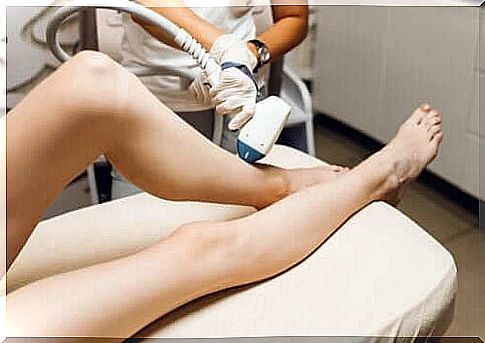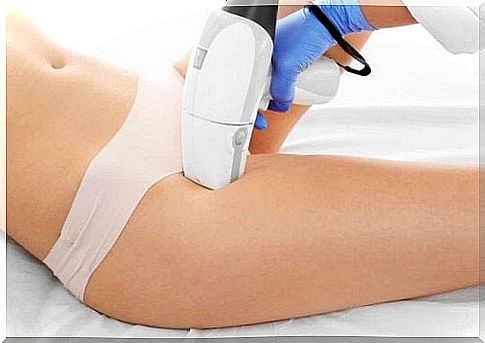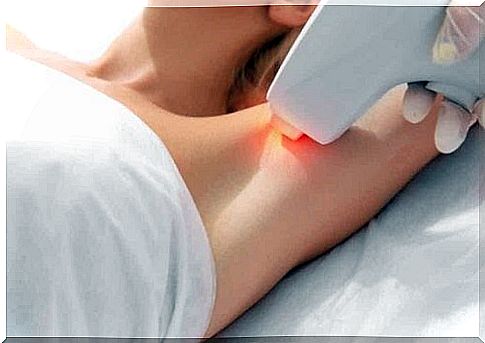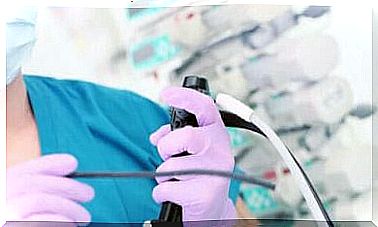Hair Removal With Intense Pulsating Light: Everything You Need To Know

Hair removal with intense pulsed light, also known as IPL, is a cosmetic hair removal treatment. People undergo it to minimize age spots, freckles, birthmarks, varicose veins, rosacea and – of course – to remove unwanted hair.
This is one of the three methods classified as permanent hair removal. The other two are laser hair removal and electrolysis. However, IPL does not offer permanent results, only rather long-lasting ones.
Hair removal with intensely pulsating light is effective in inhibiting or weakening hair growth. It is a safe photoepilation method that penetrates down to the second layer of the skin or dermis without damaging the superficial layer or epidermis.
Let’s take a closer look at it.
How does hair removal work with intensely pulsating light?

Hair removal with intensely pulsed light is similar to laser hair removal, but differs from it in the type of light it uses. While laser technology emits light with a single wavelength, this treatment delivers light with multiple wavelengths.
In other words, this method emits a soft, multicolored light that expands or moves in different directions. In turn, a laser has a single color and focuses on a specific location.
In either case, a technician uses light to heat the hair follicles and prevent regrowth. The procedure begins with preparation, which consists of avoiding stimuli such as sunlight, chemical scrubs, manual hair removal, collagen injections, creams or products that contain vitamin A and blood thinners.
The actual procedure follows these steps:
- Apply anesthetic cream 30 to 60 minutes before the procedure.
- Cleaning of the area to be worked on.
- Apply a cold gel on the skin.
- Wear dark glasses to protect the eyes.
- Application of light on the area (this lasts from 20 minutes to just over an hour, depending on the area).
- There may be a stinging sensation or redness for the next four to eight hours.
- There may be swelling and it usually lasts for several days.
- Finally, the treated area should be moistened twice a day for the next three months.
The benefits of hair removal with intense pulsating light
Hair removal with IPL is a widely accepted treatment for both its simplicity and durability. Its main advantages are as follows.
Personal treatment
The device used for hair removal with intensely pulsating light can be adjusted to suit individual characteristics. It also takes into account the characteristics of the skin and hair. This treatment does not necessarily require a specialist and people can actually do it at home, but it is not recommended.
Types of hair
IPL can be easily adapted to hair with different fullness. It can effectively remove both fine and coarse hair. For example, laser treatments require different types of treatment for each type of hair.
Area coverage
Each shot covers an area of 2 square centimeters. This is a large area compared to lasers that only cover certain points. Thus, it removes more hair in less time.
Minimal discomfort
IPL rarely causes pain. In most cases, each trigger causes only a mild sensation of heat along with a gentle dot. This makes it easy to treat sensitive areas of the skin, such as groin, face, armpits, buttocks, etc.
Quick recovery
Side effects of this treatment are minimal. The discomfort of the procedure lasts only a few hours and side effects are rare. Recovery is fast as there is no damage to the top layers of the skin.
The disadvantages of hair removal with intense pulsating light

As with any procedure, hair removal with intensely pulsating light also has limitations and disadvantages. The most relevant revealed in a photoepilation study are:
Blond hair
Hair removal with intensely pulsating light is not as effective with light hair. In addition, it does not remove gray hair because it lacks melanin. As a general rule, dark hair is much more effective, especially if the skin is light and contrasts with it.
Durability
Several treatments are needed to achieve an optimal result. It is also necessary to conduct one or two maintenance sessions per year. In addition, the treatment must be performed by an experienced professional to achieve excellent results.
Possible risks
An incorrect treatment will lead to hormone spots. There is also a risk of damage such as scarring, inflammation, bleeding, infection, discoloration, calluses or blemishes.
Limitations
Hair removal with pulsating light is not good for dark or tanned skin. In addition, it is not suitable for children and teenagers and pregnant or breastfeeding women. In addition, this treatment is not good in case of certain skin diseases, so always consult your doctor in advance.
Do you need to undergo hair removal with intense pulsating light?
This technique is great for people who meet the conditions for optimal treatment (i.e. people with thick hair that contrasts with the color of their skin). The results are otherwise limited.
This procedure is usually expensive, so it is important to make a thorough assessment in all cases. There are other options such as laser treatment, Fraxel laser and microdermabrasion.
As usual, contact a dermatologist if you have any questions or concerns.









